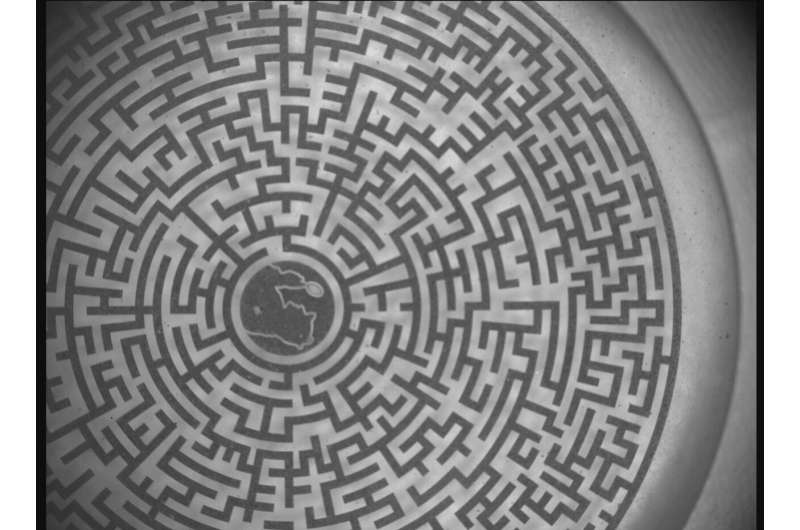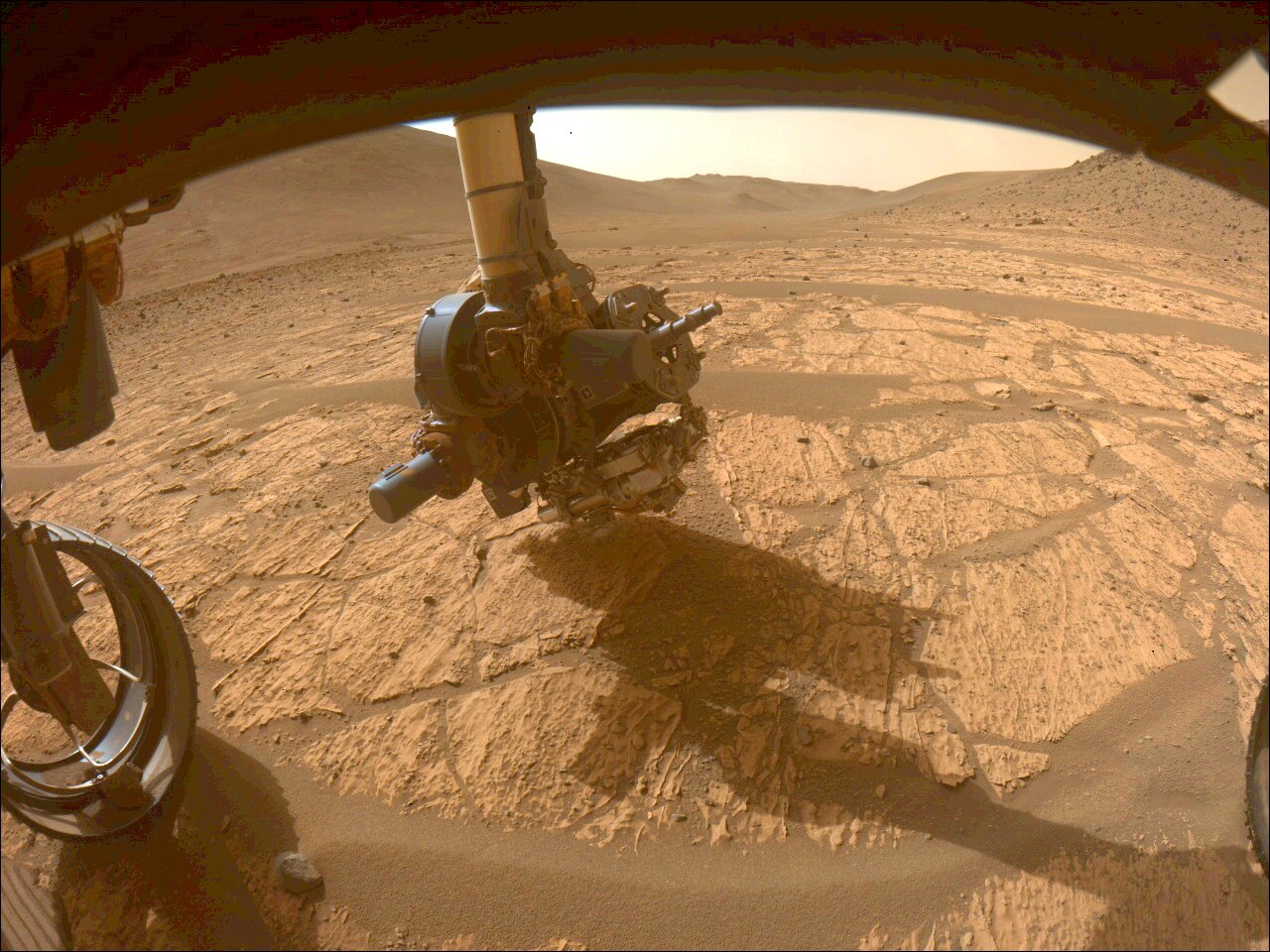This image of NASA’s Perseverance rover collecting data on the wear of the “Valhalla Glades” was taken June 14 in the “Bright Angel” area of Jezero Crater by one of the rover’s forward hazard avoidance cameras. The WATSON camera on the SHERLOC instrument is closest to the surface of Mars. Credit: NASA/JPL-Caltech
After six months of hard work, another instrument has been put into operation that will allow the Mars rover to search for possible signs of ancient microbial life.
The SHERLOC (Scanning Habitable Environments with Raman & Luminescence for Organics and Chemicals) instrument aboard NASA’s Perseverance Mars rover has analyzed a rock target with its spectrometer and camera for the first time since January of last year. The instrument is playing a key role in the mission’s search for signs of ancient microbial life on Mars. Engineers at NASA’s Jet Propulsion Laboratory in Southern California confirmed June 17 that the instrument was successful in collecting data.
“Six months of diagnostics, testing, imaging and data analysis, troubleshooting and retesting could not have yielded a better conclusion,” said Kevin Hand of JPL, principal investigator at SHERLOC.
Mounted on the rover’s robotic arm, SHERLOC uses two cameras and a laser spectrometer to search for organic compounds and minerals in rocks that have been altered in watery environments and that could reveal signs of past microbial life. On Jan. 6, a movable lens cover designed to protect the instrument’s spectrometer and one of its cameras from dust became frozen in a position that prevented SHERLOC from collecting data.
Analysis by the SHERLOC team indicated a malfunction of a small motor responsible for moving the protective lens cover and adjusting the focus for the spectrometer and the Autofocus and Context Imager (ACI) camera. Testing possible solutions on a duplicate SHERLOC instrument at JPL, the team began a long, painstaking evaluation process to see if and how the lens cover could be moved into the open position.
SHERLOC detective work
Among many other steps the team took, the team attempted to heat the lens cover’s small motor and command the rover’s robotic arm to rotate the SHERLOC instrument at different orientations with supporting Mastcam-Z images, showing the mechanism was moved back and forth to loosen any debris that might be blocking the lens. cover and even turn on the rover’s impact drill to try to push it loose. On March 3, images returned from Perseverance showed the ACI cover had opened more than 180 degrees, clearing the camera’s field of view and allowing the ACI to be placed close to its target.
“With the lid out of the way, a line of sight for the spectrometer and camera was established. We were halfway through,” said Kyle Uckert, SHERLOC deputy principal investigator at JPL. “We still needed a way to point the instrument at a target. Without focus, SHERLOC images would be blurry and the spectral signal would be weak.”
Like any good ophthalmologist, the team went looking for the prescription for SHERLOC. Unable to adjust the focus of the instrument’s optics, they relied on the rover’s robotic arm to make small adjustments to the distance between SHERLOC and its target to obtain the best image resolution. SHERLOC was tasked with taking photos of its calibration target so the team could verify the effectiveness of this approach.
“The rover’s robotic arm is amazing. It can be controlled in small quarter-millimeter increments to help us evaluate SHERLOC’s new focus position, and it can place SHERLOC on a target with great accuracy,” Uckert said. “After testing first on Earth and then on Mars, we found that the best distance for the robotic arm to place SHERLOC is about 40 millimeters,” or 1.58 inches. “At that distance, the data we collect should be as good as ever.”
Confirmation of the proper positioning of the ACI on a Martian rock target was provided on May 20. The June 17 verification that the spectrometer was also functional checked the team’s final box and confirmed that SHERLOC is operational.

The Perseverance team used the SHERLOC instrument’s Autofocus and Context Imager to capture this image of the calibration target on May 11 to confirm that a stuck lens cover issue had been resolved. A silhouette of fictional detective Sherlock Holmes is seen at the center of the target. Credit: NASA/JPL-Caltech
“Mars is hard, and bringing instruments back from the brink is even harder,” said Perseverance project manager Art Thompson of JPL. “But the team never gave up. Now that SHERLOC is back online, we continue our explorations and sample collection with a full arsenal of scientific instruments.”
Perseverance is in the later stages of its fourth science campaign, looking for evidence of carbonate and olivine deposits in the ‘Margin Unit’, an area along the inner rim of Jezero Crater. On Earth, carbonates are typically formed in the shallow water of freshwater or alkaline lakes. It is hypothesized that this could also be the case for the Margin Unit, which formed more than 3 billion years ago.
Quote:Sleuthing enables Perseverance Mars rover team to revive SHERLOC instrument (2024, June 26) retrieved June 28, 2024 from https://phys.org/news/2024-06-enables-perseverance-mars-rover-team .html
This document is protected by copyright. Except for fair dealing for the purpose of private study or research, no part may be reproduced without written permission. The contents are provided for information purposes only.
